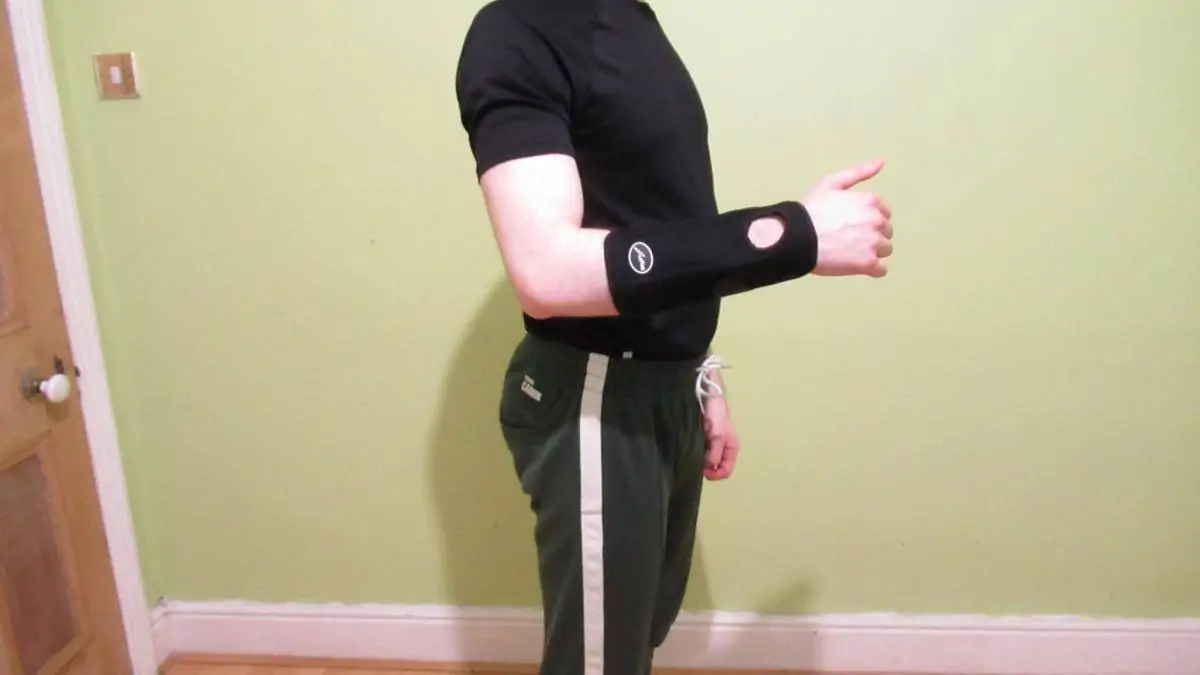The forearm, wrist, and elbow areas are among the most common places to get injured. This is especially true if you play sports or perform a lot of manual work. Also, if you’re a parent, your children can damage this area if they’re very active and place their lower arm in an awkward position while playing.
Injuries can, of course, be acute or chronic, severe or mild. And each will require specific treatment. However, for many people, buying a forearm brace for tennis elbow, tendonitis, or whatever other problem they have is a very smart idea.
Related recovery posts
What is a forearm brace?
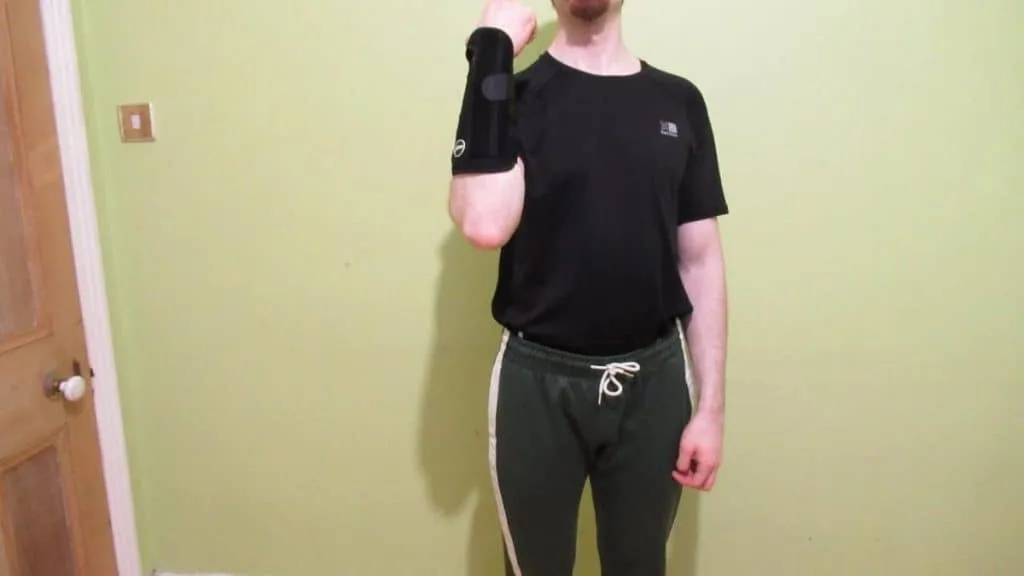
A forearm brace is a device that wraps around your lower arm (usually from the wrist to the elbow) and prevents your forearm from rotating, effectively bracing it in a comfortable position.
A quality forearm brace will also help to absorb shock, which, if it isn’t protected against, could worsen an existing condition or injure your forearm if it isn’t already (for example, if you fall during sports).
How can a forearm brace help you?
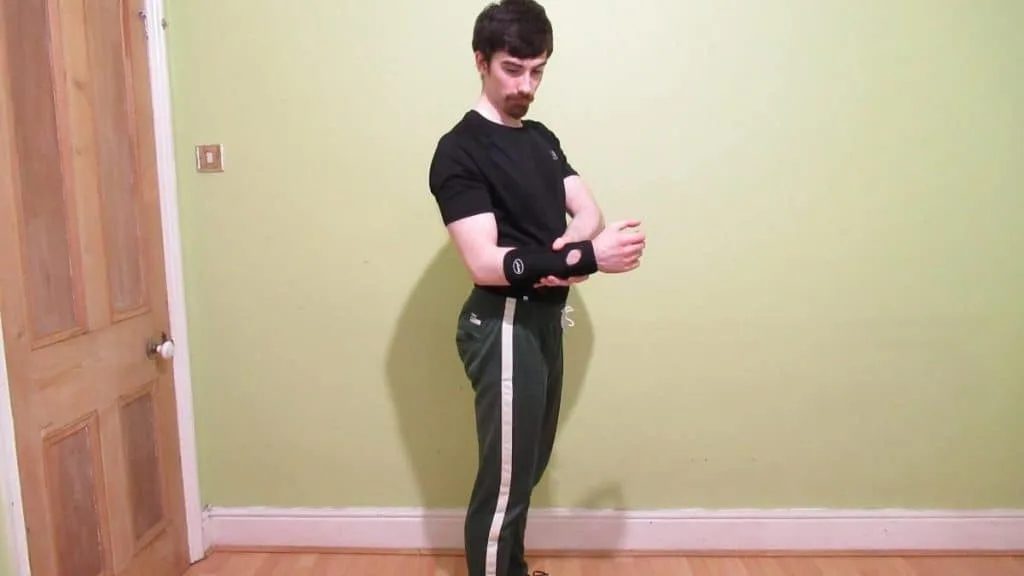
Learn how a forearm brace can support your recovery.
Provides compression
It’s well documented in research that moderate compression of an injured area can help to speed up recovery by promoting better blood flow and less muscle soreness. [1]
The great thing about a forearm tendonitis brace or just forearm braces, in general, is that they offer support while also providing compression. This means that you don’t have to spend extra money on a separate compression device or awkwardly wear two sleeves on your arm.
Just make sure that you follow the instructions and the advice of your doctor so that you don’t fit the device too tightly. You’ll most likely know if your forearm splint brace is too tight, but it’s still important to keep this in mind because you never want to cut off your blood flow—especially not to an injured limb.
Prevents rotation
The forearms naturally rotate via pronation and supination. But if you have an injury, rotation can be too much too soon. A reliable forearm support brace will often lock your forearm in place and preventing it from moving. This is because it attaches from the wrist and elbow and thus covers a large surface area of your lower arms.
Of course, you can still move your arm while wearing a wrist and forearm brace, but the movement will be coming from your shoulder and not your forearm.
Stabilizes the wrist and forearm
A wrist forearm brace lends much-needed support to injured or vulnerable areas of the lower arm.
Although it might seem easy to simply hold your arm in place, that’s often not the case when you’re injured because our brains usually still run an autopilot some of the time. This mental efficiency could even cause more damage if you accidentally place your limb in a compromising position when, in fact, you should be resting it.
A good forearm fracture brace or a simpler brace for forearm pain will take some of the strain off your lower arm by locking it in place, which means that you can’t accidentally use muscles that you shouldn’t be using (which could delay your recovery).
Supports your elbow
Buying a forearm brace for tennis elbow is a good idea to speed up recovery because the elbow is very active during everyday tasks. Ironically, you don’t often realize this until you get injured.
But without adequate support, you might feel consistent elbow discomfort throughout the day if you don’t have a suitable forearm brace for tendonitis of the elbow.
What to look for in a forearm brace
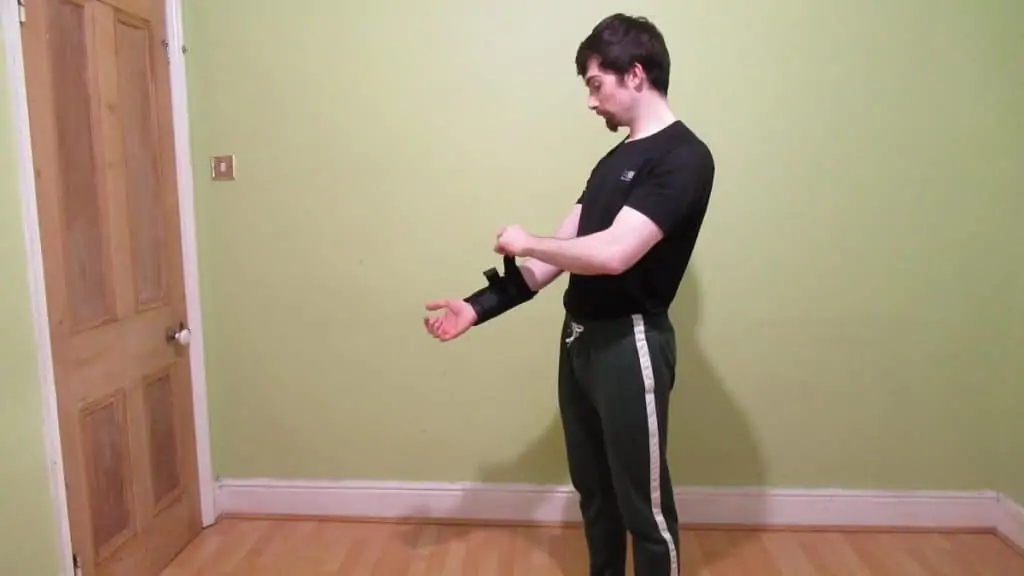
Here’s what to look for in a tendonitis forearm brace or any similar forearm wrist brace.
Washable
I won’t sugarcoat it; your forearm splint brace isn’t going to smell like roses after you’ve had it on for days and weeks at a time. So to avoid unpleasant odors, make sure that the forearm support brace you’re looking at is washable.
Now, this doesn’t have to be machine washable. But you want to be able to hand wash it from time to time to keep it smelling fresh.
Adjustable
Besides the injury itself, there’s nothing worse during recovery than a wrist and forearm brace that doesn’t fit properly.
Too tight, and you inhibit your blood circulation.
Too loose, and you lose the stabilization benefit.
Picking the right size is very important. You’ll want to measure your forearm circumference before you place your order, and you’ll also want to seek out a wrist forearm brace that has further adjustments so that it feels just right (you’re going to be wearing it a lot after all).
Positive reviews
Everyone has their own opinion about what makes a good tendonitis forearm brace, or for whatever condition you might be suffering from. But one of the best ways to avoid buying a poor product is to look at reviews from real customers.
This way, you’ll be able to (most likely) find someone with a similar problem or injury as you and see how the specific forearm fracture brace/forearm tendonitis brace helped them during their recovery.
You’ll also get an insight into the quality of the support. [2] Did it last long? Was it comfortable to wear? These kinds of things can seem insignificant, but they can make wearing the forearm splint brace much more tolerable.
Warranty protection
If you want to know whether or not a brand trusts in their product, just check out their warranty. While there are exceptions, most good brands offer 90 days warranty and above.
This indicates that their materials are durable and, of course, that they believe in their product.
See also
The verdict on forearm braces
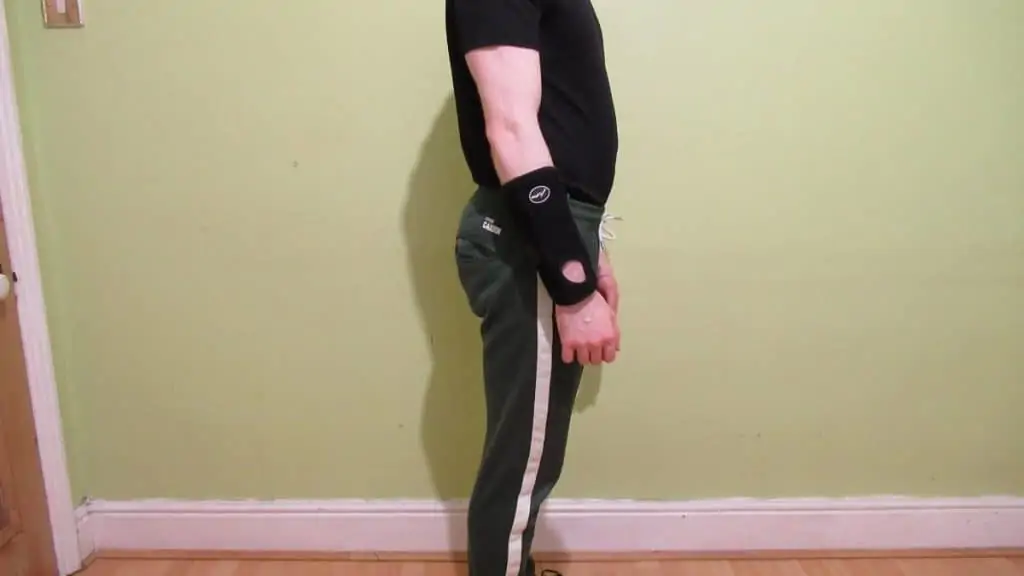
I always recommend asking a doctor or medical professional who deals with forearm injuries what to look for in a forearm brace for tennis elbow, fractures, or any other injury. [3] After all, they’ve most likely dealt with similar patients to you in their career.
But if they just recommend a general forearm brace, then the best thing that you can do is to check out the reviews. Most importantly, you want to look for products that offer good support for the region that you specifically have a problem with (forearm, elbow, etc.)
These products aren’t particularly expensive, but it’s worth paying a bit more for a quality product if you can. Cheap forearm braces aren’t necessarily bad, but I wouldn’t just buy the absolute cheapest for the sake of it. Unless, of course, it has stellar reviews.
References
- Duffield, R., Cannon, J., & King, M. (2010). The effects of compression garments on recovery of muscle performance following high-intensity sprint and plyometric exercise. Journal of Science and Medicine in Sport, 13(1), 136–140. https://doi.org/10.1016/j.jsams.2008.10.006
- Fusaro, I., Orsini, S., Sforza, T., Rotini, R., & Benedetti, M. (2014). The use of braces in the rehabilitation treatment of the post-traumatic elbow. Joints, 02(02), 81–86. https://doi.org/10.11138/jts/2014.2.2.081
- Ng, G. Y. F. (2004). The Immediate Effects of Tension of Counterforce Forearm Brace on Neuromuscular Performance of Wrist Extensor Muscles in Subjects With Lateral Humeral Epicondylosis. Journal of Orthopaedic and Sports Physical Therapy. https://doi.org/10.2519/jospt.2004.0992

